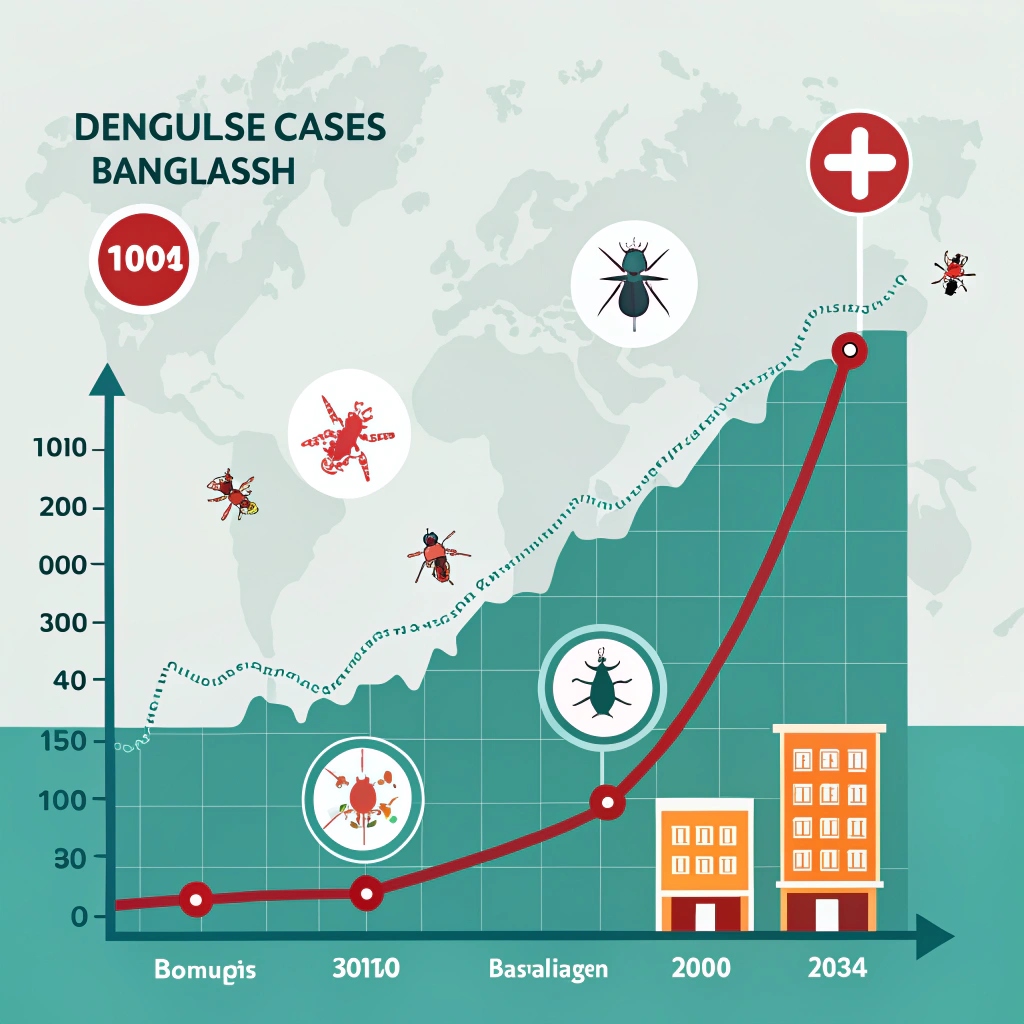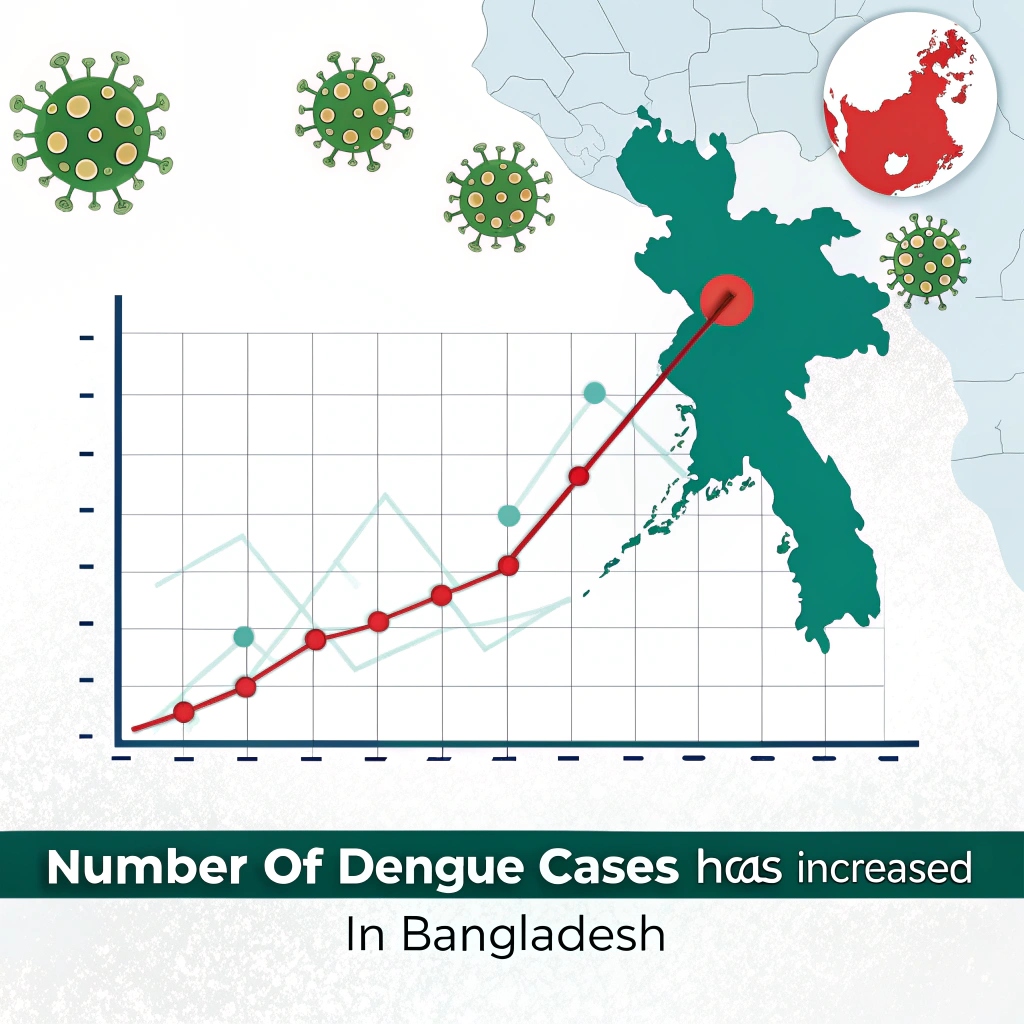The Number of Dengue Cases Has Increased in Bangladesh
Dengue fever has become a growing public health concern in Bangladesh. With climate change, urbanization, and delayed mosquito control measures, the number of dengue cases has surged dramatically in 2025. This article explores the current statistics, high-risk areas, preventive measures, and expert recommendations to protect yourself and your community.

The Number of Dengue Cases Has Increased in Bangladesh
Current Dengue Situation in Bangladesh
Statistics and Recent Reports
- As of October 6, 2025:
- Confirmed Cases: 50,689
- Deaths: 215
- Highest number of cases reported in Dhaka, Chittagong, and Khulna.
- Increasing spread to rural regions indicates dengue is no longer only an urban problem.
Seasonal Trends
- Dengue is typically monsoon-related, but irregular rainfall patterns have extended the breeding season for Aedes mosquitoes.
- Experts warn of year-round risks if control measures are not implemented.
- The Number of Dengue Cases Has Increased in Bangladesh
Causes of Increased Dengue Cases
Climate and Environmental Factors
- Erratic rainfall and prolonged wet seasons create ideal mosquito breeding grounds.
- Rising temperatures accelerate mosquito reproduction.
Urbanization Challenges
- Poor waste management and stagnant water in construction sites contribute to mosquito proliferation.
- High-density urban populations facilitate rapid transmission.
Delayed Public Health Measures
- Inconsistent mosquito control campaigns and lack of public awareness increase vulnerability.
- Hospitals are overwhelmed, reducing effective response times.
- The Number of Dengue Cases Has Increased in Bangladesh
Health Impact and Symptoms
Symptoms of Dengue Fever
- High fever
- Severe headache
- Pain behind the eyes
- Joint and muscle pain
- Nausea and vomiting
- Skin rash
Severe Dengue Complications
- Dengue hemorrhagic fever (DHF)
- Dengue shock syndrome (DSS)
- Critical drop in platelet count
Hospitalization and Treatment
- Supportive care is critical: hydration, fever management, and monitoring platelet levels.
- No specific antiviral treatment exists. Early diagnosis can save lives.
Preventive Measures
Household and Community Measures
- Remove standing water from containers, tires, and roof gutters.
- Use mosquito nets and repellents.
- The Number of Dengue Cases Has Increased in Bangladesh
- Regular fogging and larvicide treatments in high-risk areas.
Personal Protection
- Wear long-sleeved clothing.
- Apply mosquito repellent on exposed skin.
- Educate family members about signs and symptoms.
Government and NGO Initiatives
- DGHS-led awareness campaigns
- Community-based mosquito control drives
- Emergency response units in urban hospitals
High-Risk Areas
- Dhaka: Dense population, high case numbers.
- Chittagong: Port city, rainy season surge.
- The Number of Dengue: Cases Has Increased in Bangladesh
- Khulna: Increasing rural cases.
- Emerging rural districts now reporting sporadic outbreaks.

The Number of Dengue Cases Has Increased in Bangladesh
Dengue Statistics and Trends
- Yearly comparison: 2025 cases vs 2024
- Hospitalization rates
- Mortality rates
- Seasonal spikes chart
(Graphs and charts can be added here for visual SEO impact)
Where to Find More Information
Frequently Asked Questions (FAQ)
What is the current number of dengue cases in Bangladesh?
As of October 6, 2025, Bangladesh has reported 50,689 confirmed dengue cases and 215 deaths nationwide.
What are the symptoms of dengue fever?
1. Common symptoms include:
2. High fever
3. Severe headache
4. Pain behind the eyes
5. Joint and muscle pain
6. Nausea and vomiting
7. Skin rash
8. In severe cases, dengue can cause hemorrhagic fever or shock syndrome.
How can I prevent dengue at home?
Which areas in Bangladesh are most affected by dengue?
1. Dhaka: Dense urban population
2. Chittagong: Port city with rainy season spikes
3. Khulna: Increasing rural and urban cases
4. Rural districts: Emerging hotspots
How is dengue treated in hospitals?
1. There is no specific antiviral treatment for dengue.
2. Supportive care includes hydration, fever management, and monitoring platelet counts.
3. Severe cases may require hospitalization and platelet transfusions.
Why has dengue increased in Bangladesh in 2025?
1. Erratic rainfall and prolonged wet seasons
2. Poor waste management and stagnant water
3. Urbanisation and high population density
4. Delays in mosquito control measures